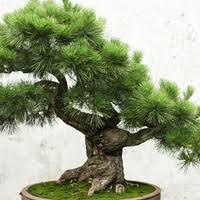 Bonsai trees are quite delicate and really very pretty. The Japanese spent thousands of years in getting the art and craft of creating pretty miniature and perfectly replicated trees growing in pots. The trees and the right way to grow them were a strictly guarded secret till the Western world distributed the secret all over the world. Now almost every country has enthusiasts and hobby clubs that deal with growing and caring for bonsai trees.
Bonsai trees are quite delicate and really very pretty. The Japanese spent thousands of years in getting the art and craft of creating pretty miniature and perfectly replicated trees growing in pots. The trees and the right way to grow them were a strictly guarded secret till the Western world distributed the secret all over the world. Now almost every country has enthusiasts and hobby clubs that deal with growing and caring for bonsai trees.
Trees are delicate and prone to damage, decay, diseases and they are just as easily infested by pests and other insects. First and foremost this problem arises because of insufficient care, and even if your tree does get damaged or infected you should learn how to treat the trees delicately and preserve them well.
There are some insects like the scale insects, spider mites, green fly, mealy bugs, black fly, aphids and the gall aphid which infest and attack the tree. There are a several different kinds of moths too that commonly cause damage to a bonsai tree. The goat moth, ermine moths, leopard moth and geometer moth are some of them.
The leaves of the bonsai plant should be carefully watched as greenhouse spider mites and ordinary mites attack the underneath of the leaf surface and leave holes, marks or discoloration as symbols that they exist there.
Make a note of any webs present on the bonsai tree as webs indicate the presence of insects. You have to take extra care if you notice that your tree is infested. Spray your delicate bonsai with insecticides especially underneath the leaves. Use acaricides so that the pests do not adapt themselves to the chemicals. The needles of the evergreen bonsai are easily attacked by spider mites and red mites. If you posses an evergreen bonsai, check the barks for cracks and see if you can locate any eggs as mites lay eggs in these cracks.
If the needles of your evergreen bonsais are infested then the needles will turn brown in color. But be careful as the needles of the evergreen bonsai turn to the brown color by itself in the winter. So don’t mistake this natural occurrence for any infestation. So if you are truly confused as to whether it has turned brown naturally or due to some infection just linger on until the summer to confirm the infestation and then you can remove those branches of the foliage which are infected.
Another sure shot sign of infection to your precious bonsai is eggs that can be deposited on the leaves. Most of the pests or insects will deposit their eggs, or attach the eggs underneath the leaves and this can be seen red spotting on the upper surface of the leaf. These eggs can be killed with any oil based products and if you are lucky and the eggs are attached to only a few leaves then just destroy those leaves that are affected.
Your bonsai is very delicate and it should be handled with extra care. Take care to see for any infestations and regular maintenance of your bonsai is a must.

Deprecated: strpos(): Passing null to parameter #1 ($haystack) of type string is deprecated in /home/agriviek8Qv/agriviet.net/public_html/wp-includes/comment-template.php on line 2522